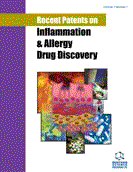Abstract
Background: Cutaneous larva migrans is one of the most common skin diseases reported in travelers returning from tropical regions. Western physicians, however, are often not familiar of this condition.
Objective: To review in depth the epidemiology, pathophysiology, clinical manifestations, complications, and treatment of cutaneous larva migrans. Methods: A PubMed search was completed in Clinical Queries using the key term “cutaneous larva migrans”. The search included meta-analyses, randomized controlled trials, clinical trials, and reviews. Patents were searched using the key term “cutaneous larva migrans” from www.google.com/patents, www.uspto.gov, and www.freepatentsonline.com. Results: Cutaneous larva migrans is a zoonotic infestation caused by penetration and migration in the epidermis of filariform larva of different kinds of animal hookworms through contact with feces of infected animals. Cutaneous larva migrans is endemic in tropical and subtropical regions. Clinically, cutaneous larva migrans is characterized by an intensely pruritic erythematous migrating tortuous or serpiginous, slightly raised track. The diagnosis is mainly clinical, based on the history of travel to an endemic area and exposure to contaminated soil/sand and the characteristic serpiginous track. Treatment options as well as recent patents related to the management of cutaneous larva migrans are also discussed. Compared with oral antihelminthics, topical treatment over the affected area is less effective. Oral ivermectin is the treatment of choice. Conclusion: The pruritic serpiginous track is pathognomonic. Oral ivermectin is the treatment of choice.Keywords: Ancylostoma braziliense, Ancylostoma caninum, cats, dogs, hookworm, pruritus, serpiginous track.
Article Metrics
 36
36 6
6 1
1 1
1


















